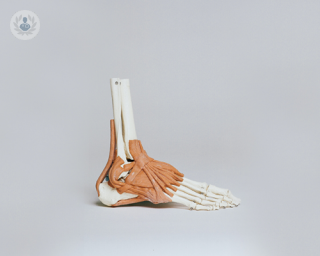Musculoskeletal physiotherapy
There are over 200 types of musculoskeletal disorder. Physiotherapy is a popular form of treatment, with nearly 7 million people seeing a physiotherapist for a musculoskeletal condition in 2011.

What is musculoskeletal physiotherapy?
Musculoskeletal physiotherapy is a combination of techniques and strategies to help restore movement and function. Techniques include teaching exercises, practising particular movements, and finding alternative ways of accomplishing a task. The specific combination of techniques will depend on the condition being treated, and a musculoskeletal physiotherapist will have specialised in the diagnosis and treatment of musculoskeletal conditions.
Who can benefit from physiotherapy?
A musculoskeletal physiotherapist can treat people with:
- arthritis
- back pain or neck pain
- repetitive strain injury
- a sports injury or work-related injury
- osteoporosis
- knee or hip replacements
What does treatment involve?
Treatment depends on the particular condition you have but can involve:
- manual therapy to improve mobility
- hydrotherapy
- electrotherapy
- advice on pain management and coping strategies
- exercises to do at home and (sometimes) free enrollment in group exercise programs
How do you prepare for a physiotherapy appointment?
Whether or not you’ve been referred to the physiotherapist from your GP, it’s important to come to the appointment with all of the information the physiotherapist might need, as well as an idea of what you want to get out of seeing them. Therefore it’s helpful to come prepared with:
- a list of any medication you currently take
- a clear overview of your symptoms, when they occur, and the intensity of any pain you experience
- loose, easily-removable clothes if you have pain and the physiotherapy needs to inspect it
- an idea of what goals you’d like to prioritise in your treatment: what do you currently struggle with that you want to do more easily? What gets in the way of your life the most?
Alternatives to physiotherapy
In some cases, if the physiotherapist is the first health professional you see, you may be referred to a different kind of specialist. This can be because the physiotherapist has reviewed your symptoms and think you would benefit from further diagnosis to identify a particular condition, or your symptoms might require a different form of treatment.
For example, back pain that is accompanied by pins and needles in the legs could be a nerve problem that may need spinal surgery to solve. Joint pain caused by inflammation could be better managed by medication.
In many cases, you may be referred because the exercises or strategies recommended by the physiotherapist haven’t worked and they suspect an underlying condition.











